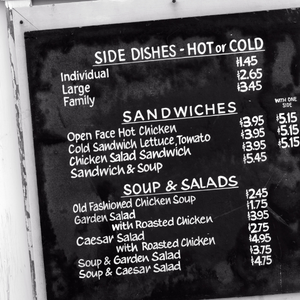As we look into 2023, restaurant owners and chefs have a unique opportunity to stay ahead of trends and take advantage of innovations for their businesses that are reshaping how people dine. With changing consumer needs in mind, focusing on emerging restaurant trends is key to driving revenue and creating an innovative dining experience, especially as inflation continues to pressure businesses. Here are our 2023 restaurant trends you should pay attention to as we start the year.
Offer Affordable Options
Inflation is a problem that affects restaurants in many parts of the world. As the cost of goods and services continues to rise due to inflation, restaurants must make difficult decisions to keep up with the increasing costs. Many restaurant owners are forced to raise prices on menu items, reducing their profit margins.
At the same time, food costs also continue to increase due to inflation. This means that restaurants must increase prices on their menu items just to keep up with rising ingredient costs. Restaurants may also find themselves at a disadvantage when competing against other businesses. This is because they may not be able to offer the same quality or quantity of ingredients at lower prices than other businesses that can purchase inexpensive products from suppliers living in economies with lower inflation rates.
Fortunately, there are ways restaurant owners can combat the effects of inflation. For instance, they can develop strategies such as discounting certain menu items during slower periods or offering special deals or promotions throughout the year. Additionally, restaurants should invest in technology tools such as POS systems and online ordering platforms that streamline processes and help reduce overhead costs associated with running a business.
By staying ahead of changes brought about by inflation and taking advantage of modern technology tools available today, operators can remain competitive in unstable market environments. At the same time, restaurants won’t have to worry about sacrificing quality service or customer satisfaction ratings — all while still earning enough revenue to stay financially stable in times when every penny counts.
Labor Costs Will Increase Productivity
In the restaurant industry, labor costs are one of the largest expenses. As such, establishments have to be creative and mindful when it comes to managing these costs. Operators have to find ways to get the most out of their staff to keep labor costs down. This means finding ways to increase efficiency and productivity, while also focusing on employee retention and training initiatives.
Labor costs can also be affected by inflation, which adds another financial burden for restaurant owners who need employees to provide service and prepare meals. Rising wages and increased competition for employees mean that restaurants must pay more to retain staff and keep them motivated. Employee turnover costs time and money, which can be hard to recoup when faced with dead or declining sales due to inflationary pressures limiting consumer spending. Growing wages can increase unemployment rates since training and employment is more expensive, causing restaurants to find ways to reduce labor costs without affecting the guest experience.
Restaurants are increasing their focus on employee engagement and loyalty programs to retain valuable staff members who would otherwise be more expensive to replace. Employee engagement helps decrease turnover rates, saving restaurant owners significant money in hiring, onboarding, and retraining new employees each year. Establishments may initiate rewards programs or even invest in providing quality health insurance benefits with affordable premiums to make their staff feel valued and incentivize them to stay with the company longer term.
Another measure businesses take is investing in consistent training initiatives so that their staff remains knowledgeable of industry trends and relevant changes made within their organization's service flow or menus over time. This ensures everyone is up-to-date on procedures within a restaurant setting. It also further promotes operational efficiency throughout its organization, including cost savings associated with labor expenses at all levels, from entry-level positions to management roles. The combination of these initiatives can ultimately result in lower labor costs for restaurants while ensuring superior customer service experiences, leading them toward future success well into 2023.
Smaller Menus & Dynamic Pricing
Restaurants will have to start looking into strategizing their menus and how much they are spending in sourcing their produce. The costs of ingredients have drastically gone up, and it is said to continue to rise. To execute this successfully, restaurant chain operators must review their food offerings and determine which food items are the least profitable. In addition, dishes that are popular amongst customers but require numerous ingredients due to their complexity should also be eliminated from menus.
By providing guests with a smaller selection, restaurants can give each dish added attention, resulting in greater satisfaction among diners. They're also able to quickly adjust their offerings based on customer feedback or changing seasons without having too much at stake since they don't have large inventories holding them back from making changes quickly. Ultimately, smaller menus give way to unique flavors and experiences that customers wouldn't otherwise find elsewhere. It's no surprise that this trend is becoming increasingly popular among high-end eateries looking to make an impression and stand out from the competition.
In addition, dynamic pricing with inflation is one of the most significant foodservice trends for 2023. It refers to a pricing strategy that allows restaurants to adjust their prices according to economic conditions and changing market forces, such as an inflationary environment or rising costs of ingredients. Inflation causes prices to increase over time, and without an effective dynamic pricing model in place, restaurant operators risk losing revenue and sacrificing pleasing customers.
Providing restaurants with more control over their profits and operations in an increasingly uncertain economic landscape, dynamic pricing also helps them attract customers by offering deals or discounts during off-peak hours. This is particularly beneficial for smaller businesses that may need additional help competing against larger chains or established eateries. Furthermore, this pricing structure gives customers more options when it comes to dining out since they won't be locked into a standard menu price all year round; they'll have access to various deals and offers at different times throughout the year.
Ghost Kitchens To Continue Facing Hard Times
The rise of ghost kitchens in the restaurant industry has been a significant phenomenon in recent years, with many restaurants opting for this cost-efficient way to serve their customers and expand their reach. However, numerous ghost kitchens have recently faced challenging times due to the pandemic and increased competition from other delivery and food services.
Ghost kitchens are defined as commercial kitchen spaces used exclusively for the preparation and delivery of take out meals. These establishments have no seating or retail space but instead focus on offering delivery-only options within a given geographical area. This particular type of food service has become increasingly popular in urban areas due to its cost-effectiveness; however, it can be difficult to maintain an efficient operation during economic hardship or disruption.
The COVID-19 pandemic has significantly impacted the entire restaurant industry and caused many ghost kitchens to shut down or experience significant losses due to reduced demand for delivery services. Many customers have opted out of ordering take out altogether, leaving these establishments needing a dependable source of income. Rising competition from other food delivery services such as UberEats, DoorDash, and Grubhub makes it increasingly difficult for ghost kitchens to remain profitable.
These companies typically offer generous discounts or promotions that make them more appealing than traditional delivery methods. Consequently, many ghost kitchen operators have found themselves competing against established brands with better funding and more resources available for marketing purposes.
Supply Chain Shortages
Supply chain shortages are anticipated to significantly impact food operations in 2023. With the rise of digital ordering, delivery services, meal kits, and other convenience-oriented offerings, restaurants are increasingly competing for ingredients. This has caused prices to soar in some cases and has made it difficult for business owners to secure reliable sources for the ingredients they need.
Restaurant owners can deeply feel the effects of these supply chain shortages. A shortage of one ingredient could mean a dish must be removed from the menu until a suitable replacement is found. Business owners may also find themselves unable to fulfill orders due to a lack of availability of ingredients, resulting in unhappy customers and negative reviews, which may lead to long-term damage to their reputation.
In addition, when supplies are limited or there's a shortage of key ingredients on the market, operators may be forced to turn to alternative providers who could charge massive prices or offer lower-quality ingredients than those that were originally sought after. This could mean that restaurants have no choice but to raise prices on specific dishes or lower overall quality to stay competitive with other restaurants with access to better ingredients at lower costs.
It's clear that supply chain shortages will continue to pose a major challenge for restaurant owners in 2023 and beyond. Restaurants need access to high-quality fresh produce and proteins at competitive prices to remain profitable and competitive among other restaurants offering similar cuisines. However, with global demand outstripping supply in many cases, this can often seem impossible without putting financial strain on businesses or compromising quality standards – something all restaurateurs hope can be avoided in 2023.
Step Up Your Game
Even if we don’t have flying cars or colonies on Mars just yet, it’s safe to say that the future is now — and the restaurant industry is no exception. With people and businesses becoming more and more affected by the inflation occurring, it’s clear that the trends of 2023 are shaping up to help restaurants combat those struggles. So whether you’re a restaurateur who wants to stay ahead of the curve or a foodie who wants to know what’s next, keep your eyes peeled for these new changes to improve restaurant businesses this new year.








